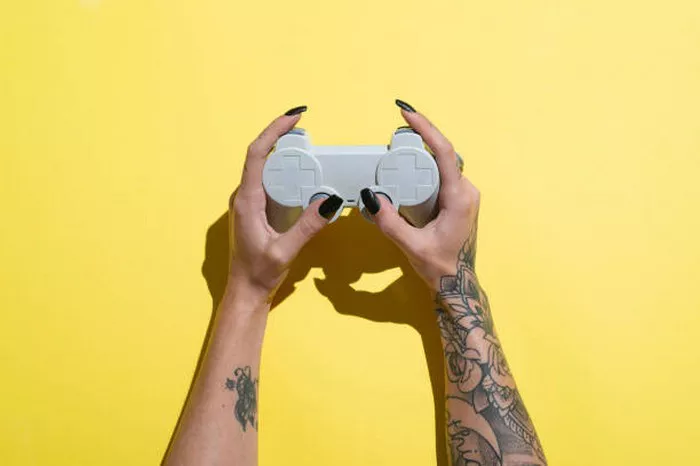Getting a tattoo is an exciting experience, but proper aftercare is essential to ensure it heals well and remains vibrant. Proper cleaning and care help prevent complications, such as infections or poor healing. This article provides a detailed guide on how to clean and care for a tattoo, from the initial cleaning to daily routines, moisturizing, general aftercare tips, and recognizing signs of infection.
Initial Cleaning
1. Washing Hands Thoroughly
Before touching your tattoo, it is crucial to wash your hands thoroughly. Clean hands prevent the transfer of bacteria and other contaminants that could lead to infections. Use soap and water to wash your hands, ensuring that you clean under the nails and between your fingers. This step is vital because your hands come into direct contact with your newly tattooed skin, which is particularly sensitive and susceptible to infection.
2. Removing the Bandage
After getting a tattoo, your tattoo artist will cover it with a bandage or plastic wrap. This covering is designed to protect your tattoo from bacteria and debris in the initial hours after the procedure. The bandage should typically be removed after about 24 hours. This timeframe may vary based on your tattoo artist’s advice and the size and location of the tattoo.
When removing the bandage, do so gently to avoid tearing the skin or causing discomfort. Remove it slowly, and if it sticks, moisten it with lukewarm water to make removal easier. Discard the bandage and proceed to clean the tattoo area.
3. Using Lukewarm Water and Gentle Soap
To clean your tattoo, use lukewarm water and a mild, fragrance-free soap. Harsh soaps or those containing fragrances can irritate the freshly tattooed skin. Gently apply the soap using your clean hands, avoiding the use of washcloths or sponges that may harbor bacteria.
The purpose of the initial wash is to remove any excess ink, blood, or plasma that has surfaced. Be gentle and avoid scrubbing the area to prevent unnecessary irritation or damage to the skin. Rinse the tattoo thoroughly with lukewarm water to ensure all soap is removed.
Daily Cleaning Routine
1. Washing the Tattoo Gently
For the first few weeks, you should wash your tattoo 2-3 times a day. Each time, use a gentle, fragrance-free soap and lukewarm water. Apply the soap with clean hands and wash the tattoo gently, ensuring that you don’t use abrasive materials. After washing, rinse the tattoo thoroughly to remove all soap residue.
2. Avoiding Direct Water Pressure
When washing your tattoo, avoid placing it directly under the faucet’s water pressure. High water pressure can be too harsh for the delicate, healing skin and may interfere with the healing process. Instead, use your hands to cup water and gently wash the tattoo.
3. Patting the Tattoo Dry
After cleaning your tattoo, pat it dry with a clean paper towel. Avoid using regular towels or cloths, as they can harbor bacteria and may be too rough for the sensitive skin. Pat the tattoo gently without rubbing, which can cause irritation and potentially damage the healing skin.
SEE ALSO: What Tattoo Colors Show on Black Skin
Moisturizing
1. Applying a Thin Layer of Moisturizer
Once your tattoo is clean and dry, apply a thin layer of a suitable moisturizing lotion or ointment. Choose a product specifically designed for tattoo aftercare or a fragrance-free, hypoallergenic moisturizer. A thin layer is sufficient; applying too much can suffocate the skin and interfere with the healing process.
2. Avoiding Irritating Products
When selecting a moisturizer, avoid products that contain alcohol or fragrances. These ingredients can cause irritation, dryness, or allergic reactions. Look for products that are labeled as safe for sensitive skin and are free from dyes and perfumes.
General Aftercare Tips
1. Avoiding Sun Exposure and Swimming
During the healing process, it is crucial to avoid exposing your tattoo to direct sunlight. UV rays can cause fading and increase the risk of infection. Additionally, refrain from swimming in pools, hot tubs, or natural bodies of water until your tattoo is fully healed. These environments can introduce bacteria and increase the risk of complications.
2. Wearing Loose Clothing
To prevent friction and irritation, wear loose clothing over the tattooed area. Tight clothing can rub against the tattoo, causing discomfort and potentially affecting the healing process. Opt for breathable, soft fabrics that do not constrict or irritate the skin.
3. Avoiding Picking at Scabs
As your tattoo heals, scabs or peeling skin may form. It is essential not to pick at or scratch these areas, as this can lead to scarring and affect the final appearance of the tattoo. Allow the scabs to fall off naturally, and continue to moisturize to support the healing process.
Signs of Infection
It is important to monitor your tattoo for any signs of infection. Symptoms to watch for include:
Excessive Redness: Some redness is normal in the early stages of healing, but excessive or spreading redness can indicate an infection.
Swelling: While some swelling is expected, significant or increasing swelling may be a sign of an issue.
Pus or Discharge: A small amount of clear fluid is normal, but yellow or green pus can be a sign of infection.
Increased Pain: Persistent or worsening pain beyond the initial discomfort may indicate a problem.
If you notice any signs of infection or if you are concerned about the healing process, seek medical advice. A healthcare professional can assess your tattoo and provide appropriate treatment or guidance to address any issues.
Conclusion
Proper care and cleaning of a tattoo are essential for ensuring optimal healing and preserving the tattoo’s appearance. From the initial cleaning to daily routines, moisturizing, and general aftercare, following these guidelines helps prevent complications and supports the healing process. By understanding and implementing effective aftercare practices, you can enjoy a beautifully healed tattoo and minimize the risk of infection or other issues.
Related Topics

